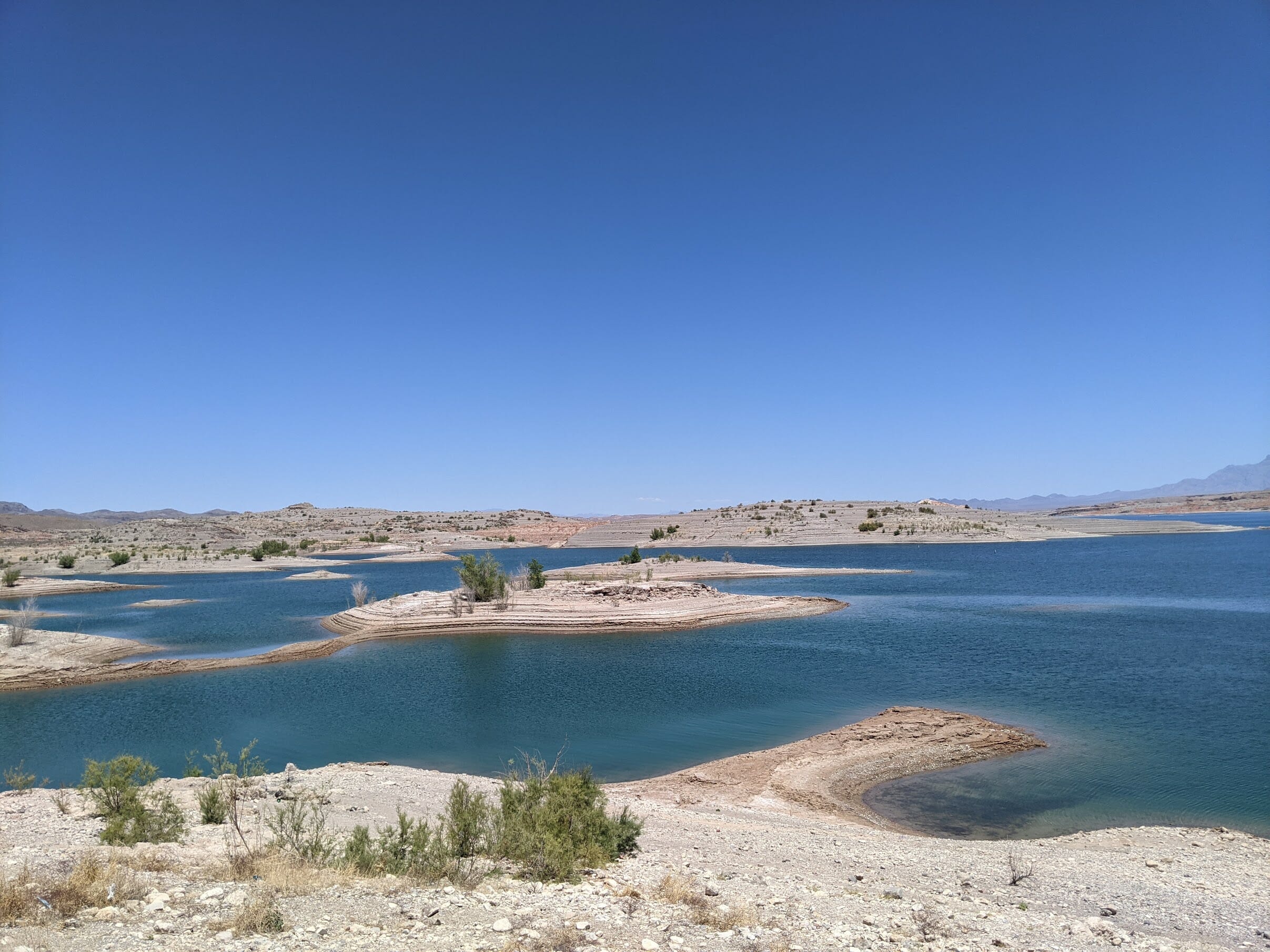My partner and I drove eight hours down to southern Nevada last week for a friend’s wedding. It was a classic desert affair, tastefully done, simple and a whole lot of fun.
One afternoon, with time to kill before wedding events began to take up the schedule, Toni and I drove out to Lake Mead, the largest reservoir in the country. It’s blue-green waters rest uneasily behind the fabled Hoover Dam, the Depression-era construction marvel completed in 1935. It backed up the Colorado and was a catalyst for growth in the Southwest, allowing for dusty desert towns to become lush oases in the Mojave.
But all is not right with Lake Mead. As of this writing, Lake Mead is almost 156 feet below “full pool.” It’s down almost 140 feet below its levels about 20 years ago. The region is in the midst of its longest drought in a century (maybe longer, honestly), and one look at the reservoir, even for someone with no water management experience, is all you need to know that whatever looms on the horizon likely ain’t pretty.
We’ve managed to harness the Colorado through a series of reservoirs for the better part of a century. But we’re running out of the one thing that enables communities to thrive in the desert: water.
But, for someone with a general understanding of how climate change is exacerbating the drought — or perhaps even fueling it — it’s another reminder that the human impact on water in the West has changed the landscape along the Colorado River from its sources high along the Continental Divide to its confluence with the Sea of Cortez (which isn’t much of a confluence any longer — most years, there’s not much of the Colorado left to reach the sea).
We’ve managed to harness the Colorado through a series of reservoirs for the better part of a century. But we’re running out of the one thing that enables communities to thrive in the desert: water.
You may have noticed that Trout Unlimited is shining some light on water in the West of late — as a conservation organization dedicated to protecting and restoring trout and salmon, water is always top-of-mind for us. What I’m learning as I follow along is that, if we’re to get through this current water crisis, we must address the myriad challenges that come with water management in the West, including water in the Colorado River, of which every drop is earmarked for use by people, by agriculture or by industry.
Things have to change, and we don’t have a lot of time to change them, particularly in the “trouty” stretches of the West where snow still melts and still fills rivers with cold, clean habitable water for the fish we love.
How can we do it? You, too, can follow along as we explore the avenues for conservation and restoration of the West’s ailing water systems. Knowledge is power, and we all need to know more about water and how we use it, both for people and for the trout we work hard every day to protect and restore.



